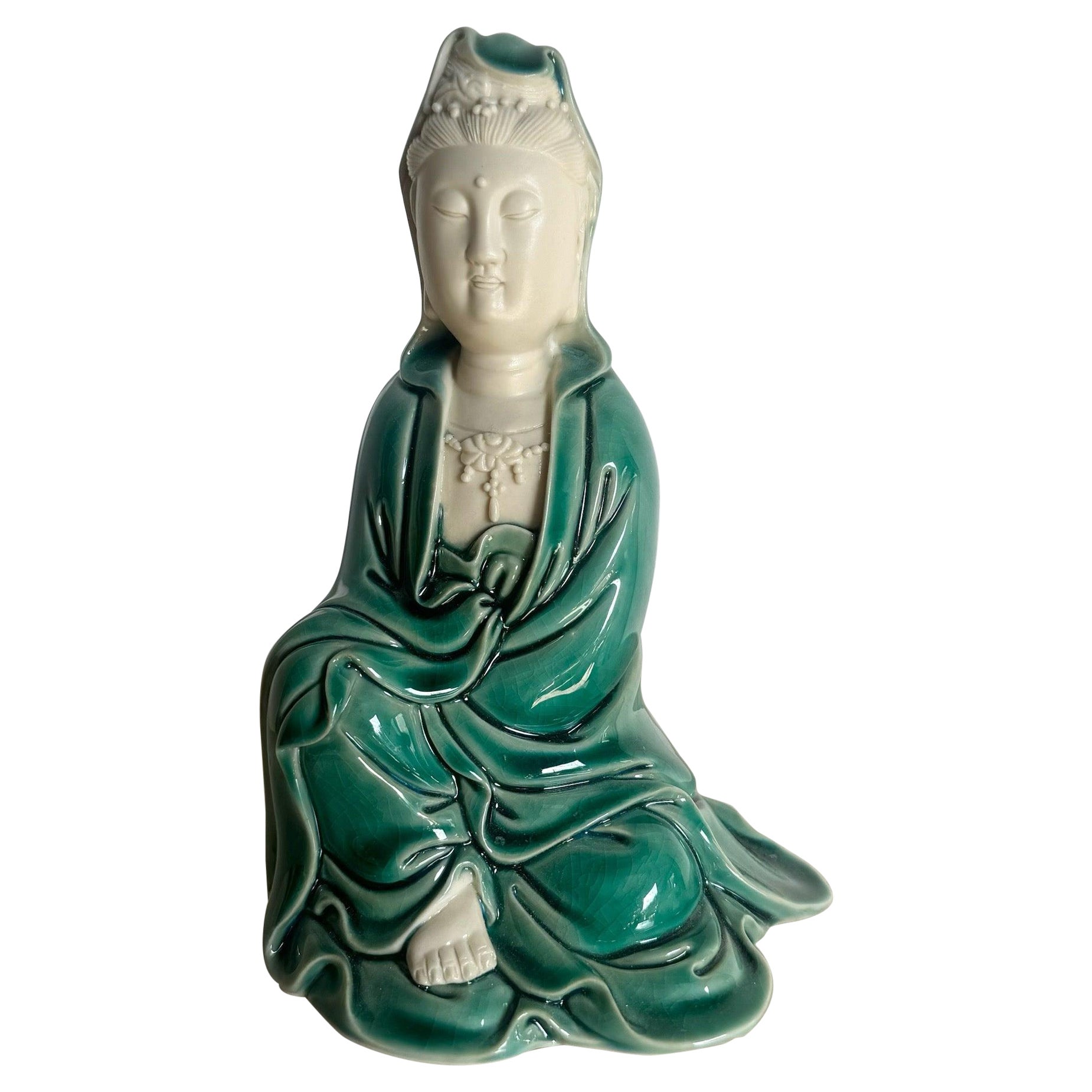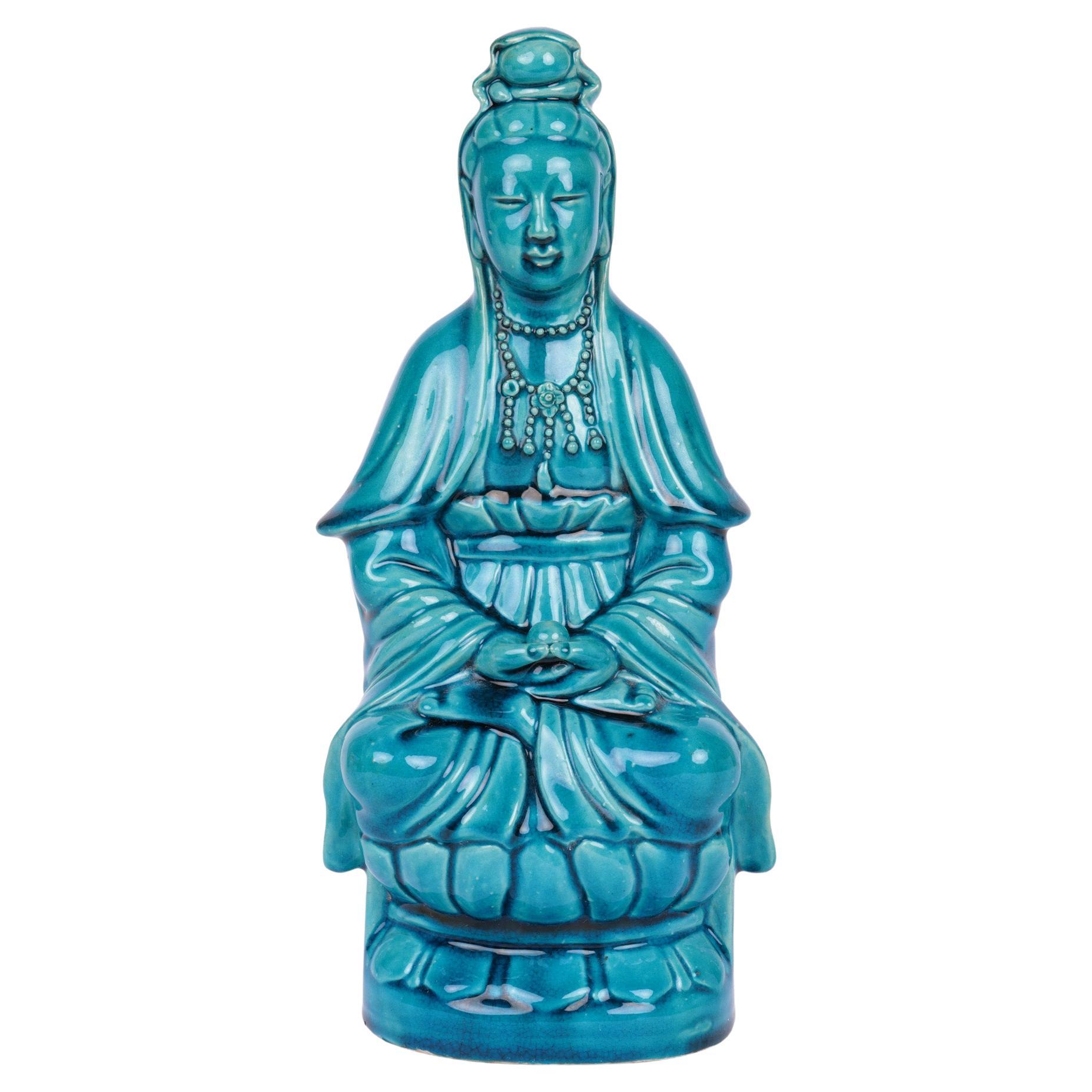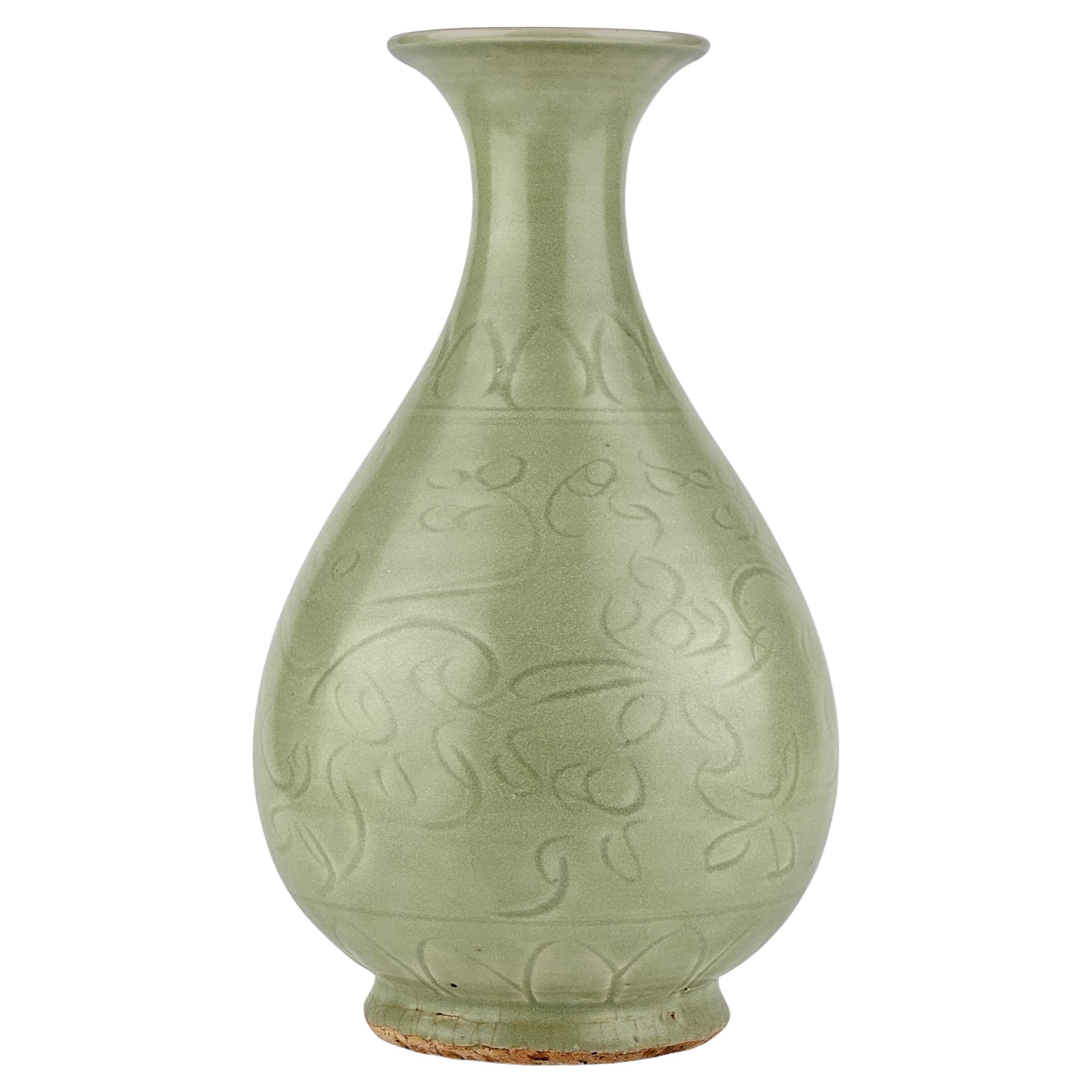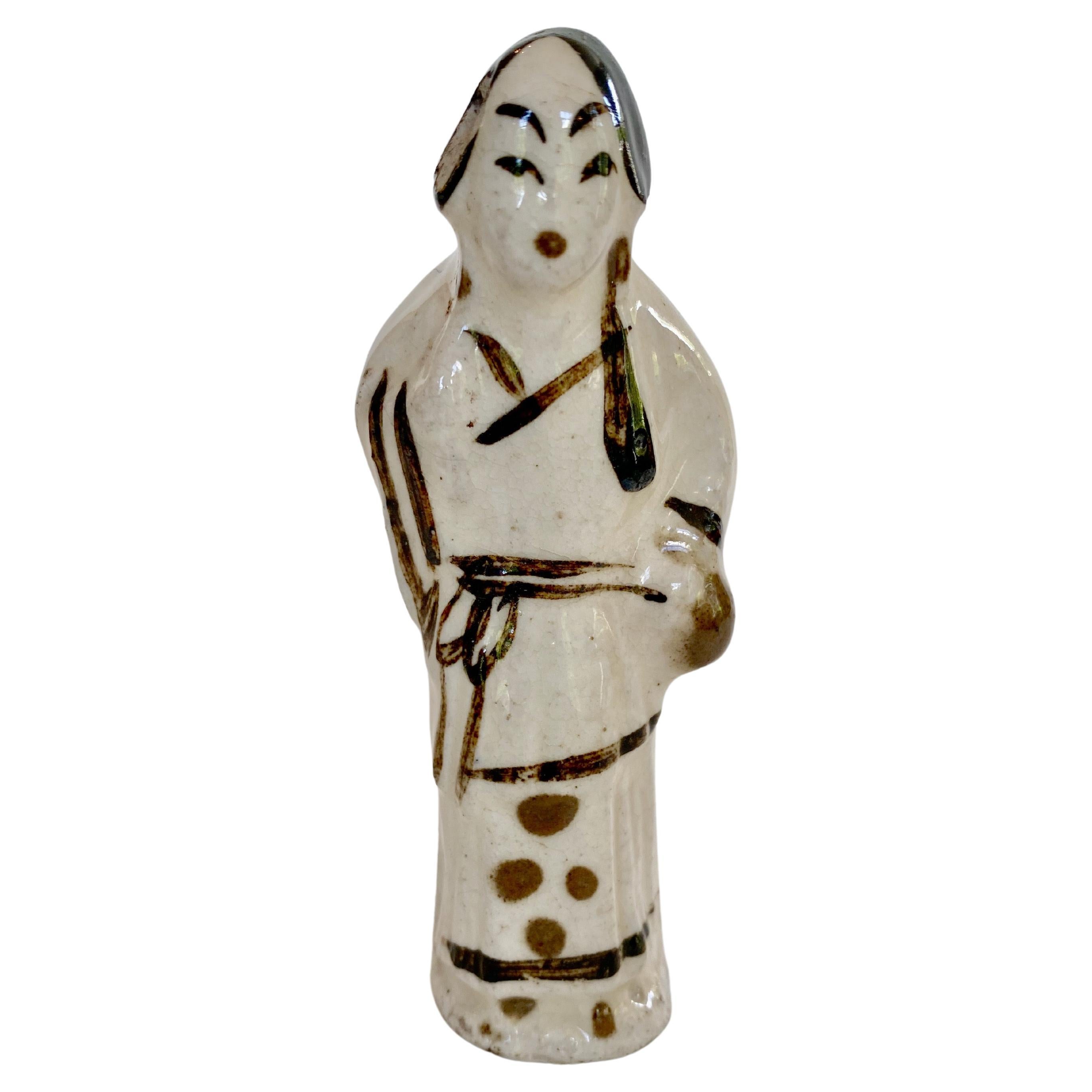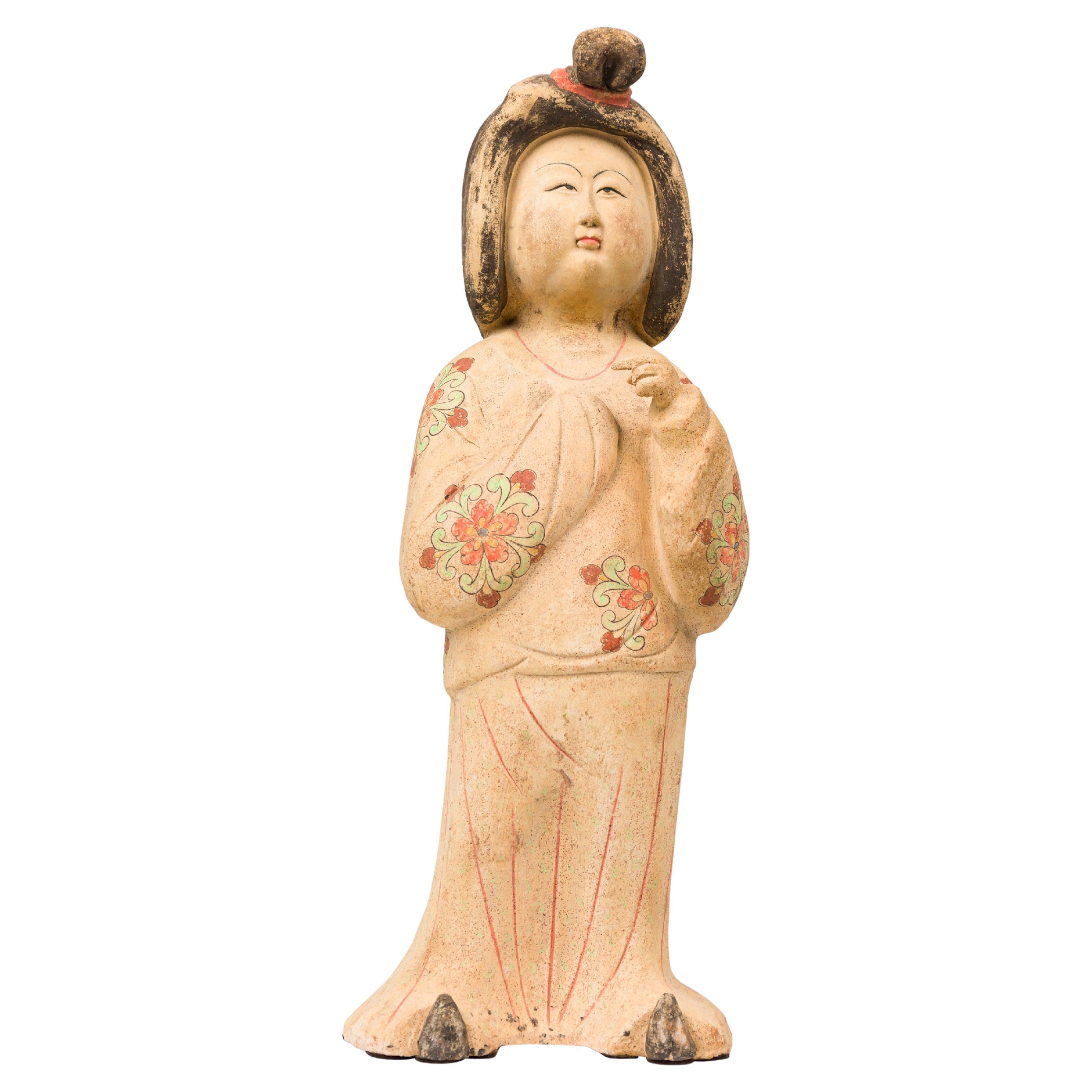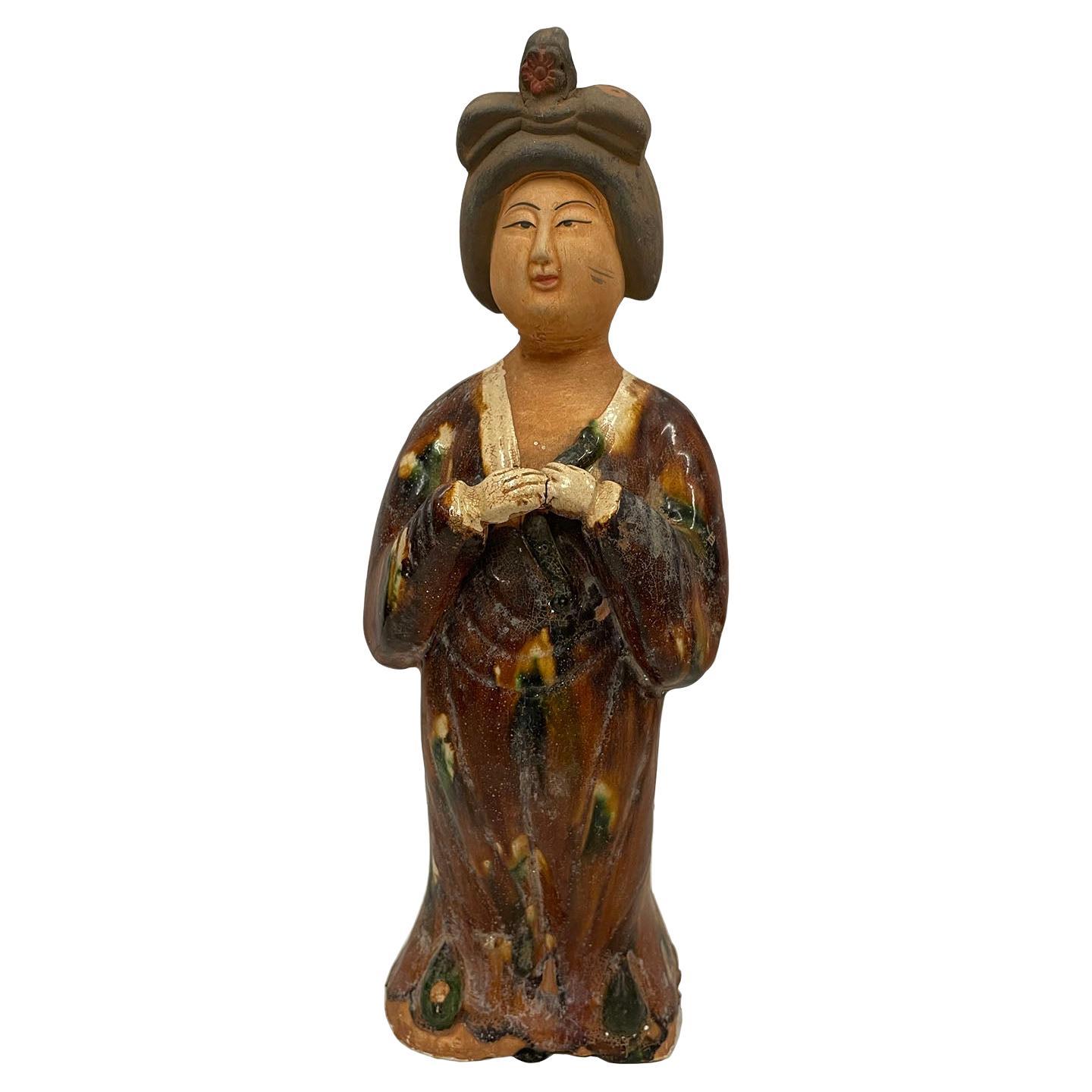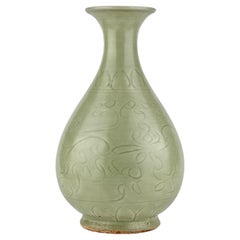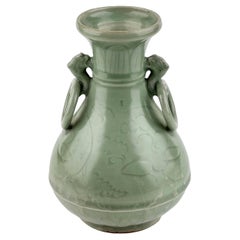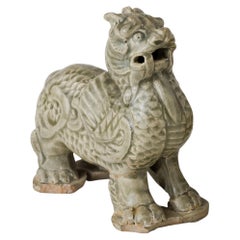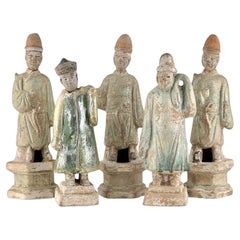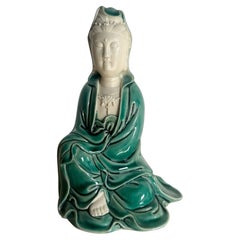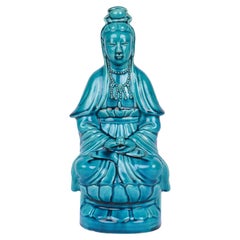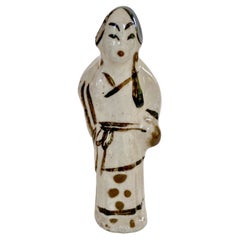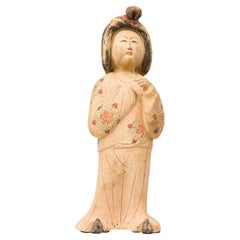Items Similar to Longquan Celadon Figurine, Ming Dynasty (1368-1644)
Want more images or videos?
Request additional images or videos from the seller
1 of 11
Longquan Celadon Figurine, Ming Dynasty (1368-1644)
$3,835
$5,90035% Off
£2,912.01
£4,480.0135% Off
€3,330.10
€5,123.2335% Off
CA$5,358.05
CA$8,243.1635% Off
A$5,959.32
A$9,168.1935% Off
CHF 3,111.77
CHF 4,787.3435% Off
MX$72,518.62
MX$111,567.1035% Off
NOK 39,742.09
NOK 61,141.6835% Off
SEK 37,271.07
SEK 57,340.1135% Off
DKK 24,853.79
DKK 38,236.6035% Off
Shipping
Retrieving quote...The 1stDibs Promise:
Authenticity Guarantee,
Money-Back Guarantee,
24-Hour Cancellation
About the Item
This sculpture is a Longquan celadon from the Ming Dynasty, renowned for its rich and jade-like green glaze. The figurine is likely a representation of a Buddhist deity or a revered scholar, showcasing the calm aesthetic expressions and graceful contours prevalent during the era. The spectrum of celadon glaze ranges from a dense grey stoneware to a nearly white porcelain texture, with unglazed parts revealing a terracotta brown upon firing. Such pieces were often part of household altars, reflecting the era's spiritual devotion. This artifact would be a treasured exhibit in any museum's Asian art collection, symbolizing both religious reverence and artistic excellence.
Period: Ming Dynasty (1368-1644)
Region: Longquan, China
Medium: Stoneware - Celadon glazed, with a range from heavy grey to almost white porcelain-like material
Type: Sculpture
Height : 24.5 cm
Provenance : Acquired in 1999, Hongkong
* Ming Dynasty Longquan Celadon
Longquan celadon from the Ming Dynasty typically exhibits a more robust and heavier stoneware body compared to its Song Dynasty predecessors. The Ming era saw an evolution in celadon glaze, achieving a wider spectrum of green hues, from olive to bluish-greens. Ming celadons often had thicker glaze applications, sometimes featuring multiple layers and even multiple firings to attain depth and richness in the glaze.
In contrast, Song Dynasty Longquan celadons are known for their more refined and thinner bodies, with a glaze palette that tends toward more subtle and more uniform green shades. The shapes of Song celadons were usually simpler, emphasizing the glaze's quality and texture.
During the Song period, there was also a greater emphasis on subtle and elegant forms, with less ornate decoration compared to the Ming pieces, which showcased more elaborate decorative motifs, including incised or moulded patterns. Song Dynasty Longquan wares were also highly prized for their thin walls and lightness, reflecting a high level of technical mastery in pottery-making.
Overall, while both dynasties produced celadons of exceptional quality, the Ming Longquan celadons are distinguished by their bolder forms and more varied glaze effects, while the Song Dynasty celadons are celebrated for their simplicity and the pure beauty of their glazes.
About the Seller
4.8
Gold Seller
Premium sellers maintaining a 4.3+ rating and 24-hour response times
Established in 1999
1stDibs seller since 2023
38 sales on 1stDibs
Typical response time: <1 hour
- ShippingRetrieving quote...Shipping from: seoul, Korea South
- Return Policy
Authenticity Guarantee
In the unlikely event there’s an issue with an item’s authenticity, contact us within 1 year for a full refund. DetailsMoney-Back Guarantee
If your item is not as described, is damaged in transit, or does not arrive, contact us within 7 days for a full refund. Details24-Hour Cancellation
You have a 24-hour grace period in which to reconsider your purchase, with no questions asked.Vetted Professional Sellers
Our world-class sellers must adhere to strict standards for service and quality, maintaining the integrity of our listings.Price-Match Guarantee
If you find that a seller listed the same item for a lower price elsewhere, we’ll match it.Trusted Global Delivery
Our best-in-class carrier network provides specialized shipping options worldwide, including custom delivery.More From This Seller
View AllA Large Carved Longquan Celadon Yuhuchunping, Yuan-Ming Dynasty
Located in seoul, KR
The bulbous body is adorned with elegantly carved floral motifs, with intertwining vines and flowers forming a natural, flowing pattern. The base is left unglazed. Base surface crack...
Category
Antique 15th Century and Earlier Indonesian Ming Antiquities
Materials
Celadon
$9,750 Sale Price
35% Off
Carved Longquan Celadon Vase, Yuan-Ming Dynasty
Located in seoul, KR
A graceful baluster form with a flared mouth, a rounded body, and a slightly raised foot. The vase features two intricate handles in the shape of animal figures holding large looped ...
Category
Antique 15th Century and Earlier Hong Kong Ming Antiquities
Materials
Celadon
$4,900 Sale Price
30% Off
Rare Yue Celadon-Glazed Two Haitai Statues, Western Jin dynasty (265-420)
Located in seoul, KR
The statue seems to be a mythical beast standing in a poised and alert stance, with its mouth open as if roaring or breathing fire. Its body is covered in detailed carvings that resemble scales and feathers, indicative of the high level of craftsmanship during the Jin Dynasty. The creature’s presence is both regal and intimidating, suggesting it might have been believed to possess protective properties.
Period : Western Jin Dynasty (266 - 316 AD)
Type : Haitai Statue
Medium : Yue celadon...
Category
Antique 15th Century and Earlier Hong Kong Chinese Export Antiquities
Materials
Celadon
$8,970 Sale Price / set
70% Off
Five Green Glazed Pottery Attendant Figures, Ming Dynasty(1368-1644)
Located in seoul, KR
The three figurines in the back exhibit the typical form of attendants, wearing conical red hats and adopting poses where their right hands are either held in front of their chests o...
Category
Antique 15th Century and Earlier Hong Kong Ming Antiquities
Materials
Pottery
$2,925 Sale Price / set
35% Off
Haitai Figurine from Ca Mau Ship circa 1725, Qing Dynasty, Yongzheng Era
Located in seoul, KR
The green-glazed beasts seated on their haunches, a short spout beside their turned heads, their mane and tail splashed with yellow or brown glaze
Period : Qing Dynasty, Yongzheng P...
Category
Antique 1720s Vietnamese Chinoiserie Antiquities
Materials
Pottery
Carved 'Longquan' Celadon-glazed Funerary vase and cover, Song dynasty
Located in seoul, KR
The vase features a ribbed body, subtly enhancing its graceful contours, and is topped with a uniquely sculpted lid adorned with figurative elements.
Period : Song Dynasty
Type : Ce...
Category
Antique 15th Century and Earlier Hong Kong Antiquities
Materials
Celadon
$3,995 Sale Price
50% Off
You May Also Like
Chinese Green and White Porcelain Quin Yan Sculpture
Located in Delray Beach, FL
Elegant Chinese Green and White Quan Yin sculpture, featuring intricate detailing and serene design, perfect for refined decor.
We sell items as acquired, without restoring or rep...
Category
Mid-20th Century Chinese Sculptures and Carvings
Materials
Porcelain
Chinese Qing Turquoise Glazed Porcelain Seated Guanyin Figure
Located in Bishop's Stortford, Hertfordshire
A very fine and attractive Chinese Qing Dynasty turquoise glazed figure of Guanyin dating from the 19th Century or possibly earlier. The hollow biscuit porcelain figurine...
Category
Antique 19th Century Chinese Qing Sculptures and Carvings
Materials
Porcelain
16th Century Chinese Pottery Figure
Located in Atlanta, GA
Ming dynasty pottery figure of a standing woman, likely from the Suzhou region.
This is a small figure with a lot of personality, rendered in crea...
Category
Antique 16th Century Chinese Ceramics
Materials
Ceramic
Chinese Unglazed Ceramic Kwanyin Figure
Located in Queens, NY
Chinese molded, unglazed beige ceramic figure depicts the stylized Buddhist Goddess posed in a billowy robe with a painted floral pattern, a peaceful smiling facial expression, her l...
Category
20th Century Chinese Sculptures and Carvings
Materials
Ceramic
Vintage Chinese Tang Tri-Colored Glazed Tomb Ceramic Statue
Located in Pomona, CA
This magnificent Vintage Chinese Tang tri-color glazed ceramic beautify figure was hand made with famous tri-colored glaze on the ceramic. It has beautiful color and detailed carving...
Category
Mid-20th Century Chinese Chinese Export Figurative Sculptures
Materials
Ceramic
Ming Dynasty Porcelain Shou Lau Figure
Located in Queens, NY
Asian Chinese (Ming Dynasty-Circa 1500) blue & green porcelain Shou Lau seated figure with oversize head (symbolism of longevity & luck) on a base suppo...
Category
Antique 16th Century Chinese Chinese Export Figurative Sculptures
Materials
Porcelain
More Ways To Browse
Green Celadon
Celadon Glazed
Song Dynasty
Chinese Song Dynasty
Song Dynasty Furniture
Asian Deity
Ming Dynasty Porcelain
Antique Chinese Celadon
Ming Green
Chinese Figurines
Chinese Ming Pottery
Ming Dynasty Glazed
Collection Porcelain Figurines
Song Dynasty Porcelain
Antique White Porcelain Figurines
Ming Dynasty Pottery
Antique Chinese Figurines
Green Ming Dynasty
